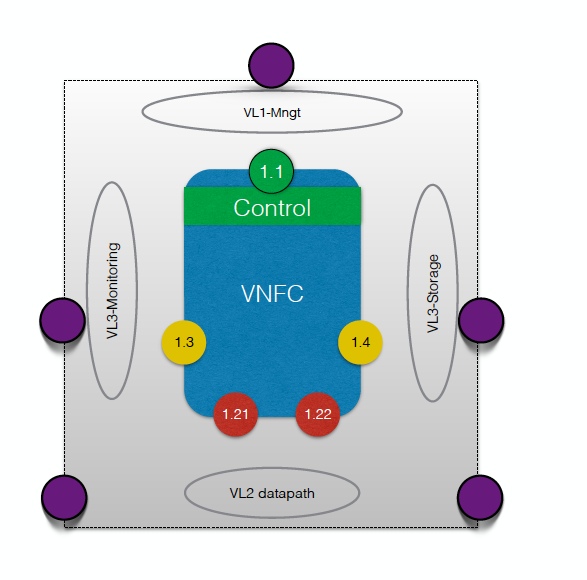#T-NOVA Descriptor Repository ##Introduction This repository contains the templates and example descriptors used in Project T-NOVA. The current folder structure contains:
- ETSI defined descriptors (etsi_<descriptor_name>)
- T-NOVA defined descriptors (t-nova_<descriptor_name>)
- Example descriptors for a Network Service containing a single VNF comprised of 2 VNFCs. (example_<descriptor_name>)
- T-NOVA VNFs descriptor files (<vnf_name>_<descriptor_name>)
##Descriptors ###ETSI Descriptors Current ETSI ISG NFV proposal as laid out in ETSI GS NFV-MAN 001 v 1.1.1
As suggested by ETSI documentation the relation model for a VNFD is illustrated in the following 
###T-NOVA Descriptors Project related sections have been added in order to acommodate its developements and requirements. Notably you may find additional sections for the Marketplace, Monitoring, EPA and VNF configuration.
###Example Descriptors
####Introduction This set of descriptors serve as an example for the definition of the appropriate VNFD and NSD required for the composotion of a NS comprised by a single dataplane VNF in this case a Virtual Traffic Classifier VNF. The basic functionality of the VNF is to accept incoming packets (data-in) analyse heade and payload information and forward the traffic (data-out) after the appropriate marking/prioritisation policies have been places on the packets categorised under certain service/application categories.
The VNFD and NSD are based on the .
####Definitions
In order to simplify the model it is assumed that each VDU contains only one VNFC.
####VNF Architecture
- Data In interface
- Data Out Interface
- VNFC1 - VNFC2 interconnection
- Public IP for the VNFC1 (management)
- at least 1 Core per VNFC and 2G RAM
- 4 vNICs per VNFC
Simple implementation of the integrated monitoring deamon as proposed
- VNFC1 IP address using dhcp
####Deployment Model
####Assumptions
- NS comprises a single VNF
- A vdu comprises of a single VNFC
- The network model for VNF deployment assumes the creation of 4 tenant networks namely:
- Management: used for internal management communication and signaling
- Monitoring: used for the monitoring agent communications with the VNFC
- Storage: used for connecting VNFC to persistent or non-persistent storage
- Datapath: used for the data that traverse the VNFC
For T-NOVA four VNFs are currently anticipated
- Virtual Traffic Classifier (vTC)
- Virtual Security Appliance (vSA)
- Virtual Session Border Controller (vSBC)
- Virtual Home Gateway (vHG)
Some preliminary examples have been included under the 'HEAT' directory in the repository.
##References
